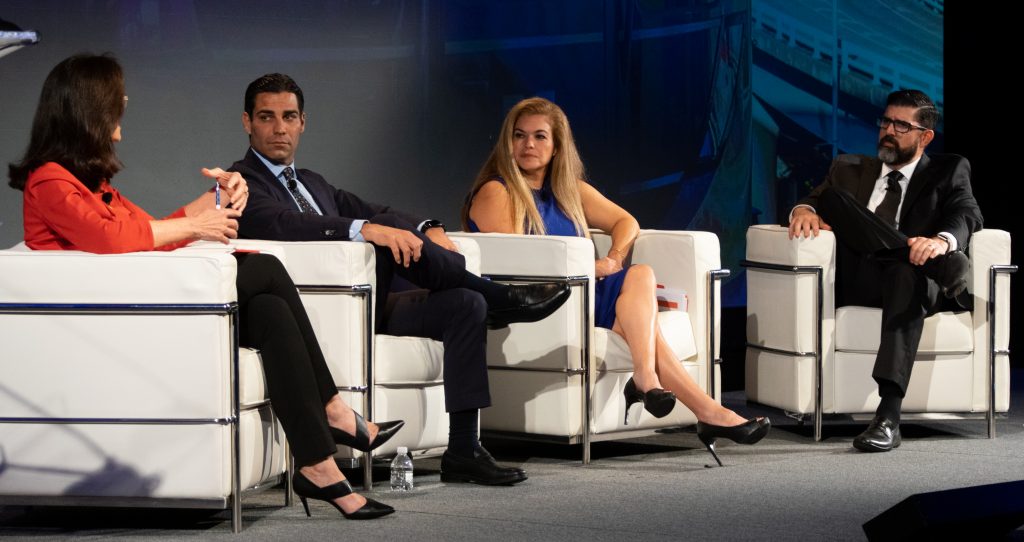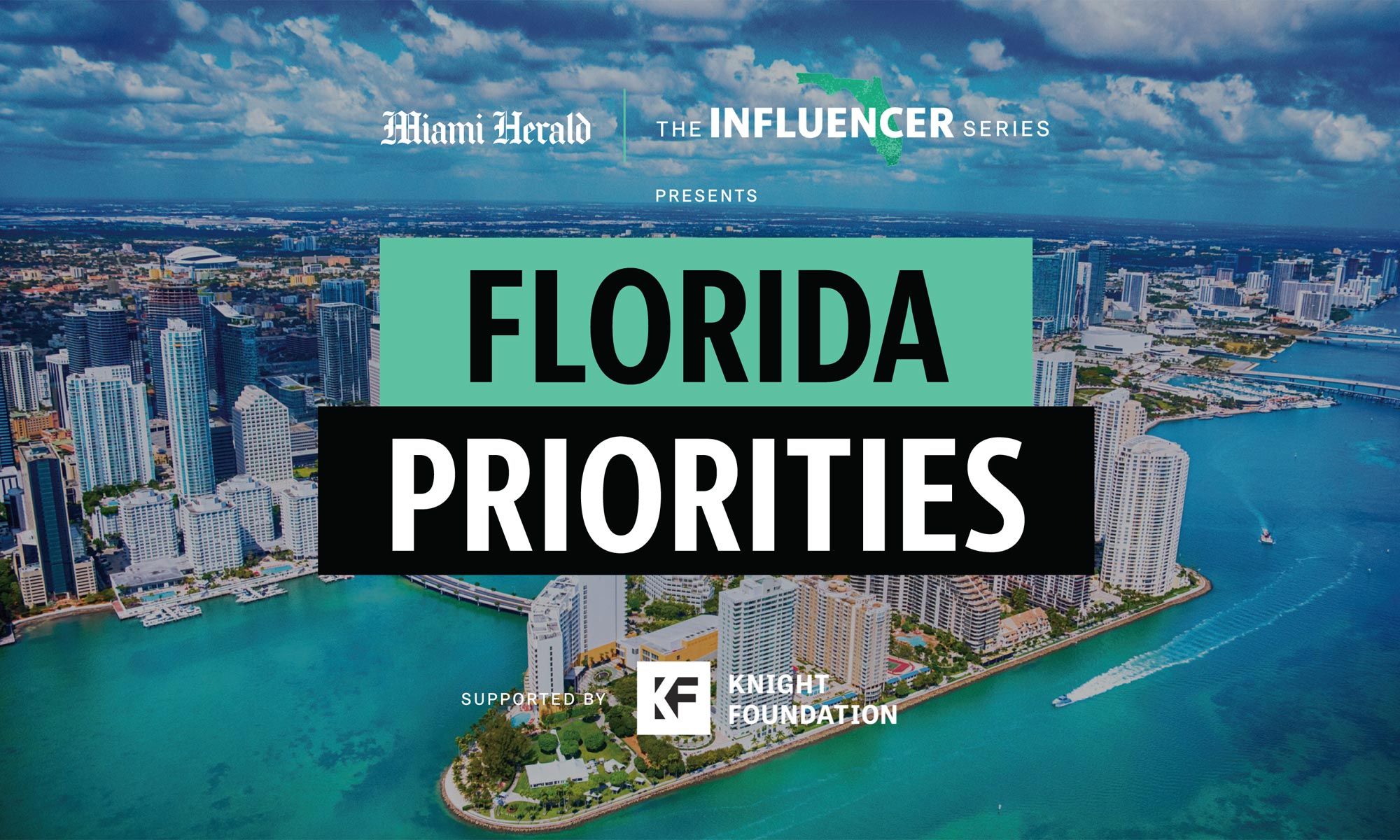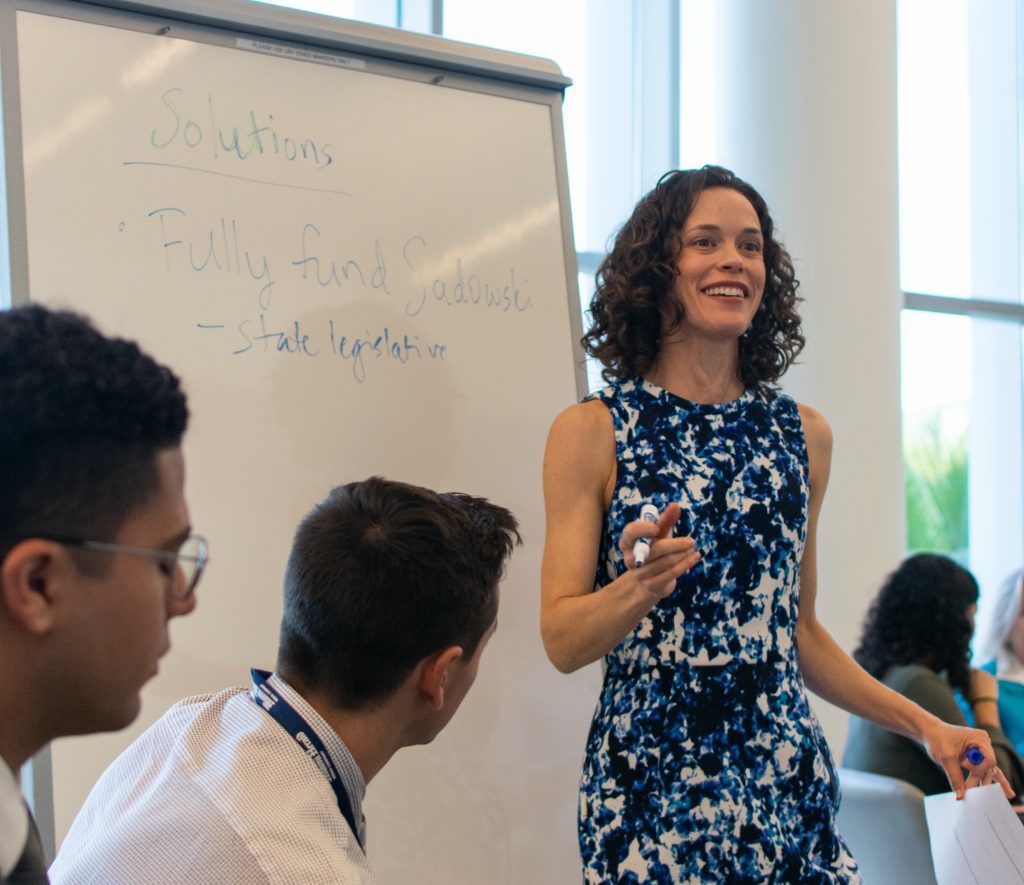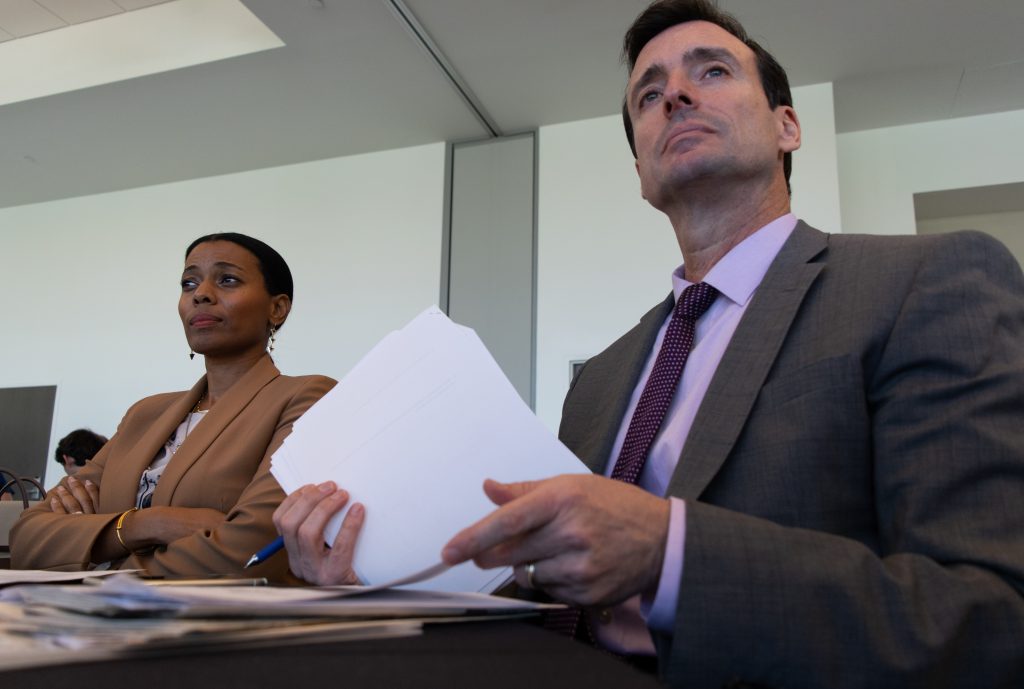
By Jonah Hinebaugh
University of South Florida – St. Petersburg
The population of Florida is growing. And growing.
Between 2010 and 2018, there was a 13.3 percent increase in the state’s population. Pinellas County saw an increase of 58,476 people while Miami-Dade had an increase of 263,568 people.
With the increase of bodies, and vehicles, comes clogged highways, neighborhoods disrupted by traffic, and an increasing need for solutions to the congestion and environmental impacts.
On Nov. 19, Miami Mayor Francis Suarez, state Sen. Manny Diaz Jr. and Alice Bravo, director of Miami-Dade County’s Department of Transportation and Public Works, gathered to discuss the viability of a statewide transportation plan.
The event was led by Mary Ellen Klas, the Miami Herald’s capital bureau chief. It took place during the second annual Florida Priorities Summit at the University of Miami’s Donna Shalala Student Center.
“People [in Miami] are not used to public transportation and it takes a lot,” Diaz said. “A lot of folks, if you tell them that when they take a train or bus and they still got to walk eight blocks to their final destination, they’re looking at you like you’re completely crazy.”
People’s tendency to opt out of public transportation has led to massive increases in vehicle emissions across Florida.
Both the Tampa and Miami metro areas had similar increases in total emissions since 1990. The Tampa metro area had a 55 percent increase and the Miami metro area had a 58 percent increase, according to an article published in the New York Times in early October.
Suarez said investing in electric grids for electric cars and solar energy is a possible solution.
“We need to prioritize solar, and we’re doing that,” he said. “We’re trying to create incentives for people to use solar technologies, which are becoming less and less expensive by the day, and then certainly anything that we can do at the state level or at the county level to promote electric vehicles. I always say that I think we’re one lease away from everyone having an electric vehicle.”
Despite not owning one himself, Suarez said it could be coming within the next three to four years.
“When you look at the dynamics of electric vehicles, if they’re made at an expense level that are added below the average car, there is no incentive not to have one,” he said. “Essentially, it’s an economic argument. It isn’t even an environmental argument at that point, because the maintenance is almost nothing.”
Car charging stations have cropped up across the urban hubs of Florida including the Tampa Bay and Miami-Dade areas.
In December 2018, the city of St. Petersburg partnered with Duke Energy — whose regional headquarter is housed there — to bring its “park and plug” program to the city. The company’s initiative focuses on encouraging clean transportation by installing electric vehicle charging stations.
USF St. Petersburg also partnered with the corporation to bring six chargers to its campus earlier this year.
According to the U.S. Department of Energy, there are more than 100 charging stations in Miami.
“A few years ago, an initiative started to have compressed natural gas buses, and we actually just finished a procurement to buy 33 electric buses,” Bravo said. “So we’re going to start exploring that as a possibility.”
The challenge for leaders would then be overcoming the stigma associated with riding public transportation.
“I think that’s an issue in the entire country,” Bravo said. “There’s less of a stigma for rail than for bus. When you take the time to ride the bus, and you see who’s using, it’s the same people pretty much using the rail — people going to work, people that work in the hospital, people that work construction jobs or any kind of job anywhere.”
Bravo followed up by saying a big differentiator between the two is time savings.
“So that’s why with our BERT network we’re looking at ways to get the bus out of the congestion,” she said. “If you’re in the same congested roadway then you’re not you’re not saving time.
“We’re always looking forward to show people ‘Hey, the people riding transit are just like you,’” she said. “When people ask me ‘What are you gonna do about congestion?’ I’m like ‘Well, I’m gonna get you out of your car.’ If you’re stuck in traffic and you look around, pretty much every car around you, there’s a single person in each car so as long as we have that we’re going to have problems.”
The U.S. Census Bureau found that only 1.3 percent of people use public transportation to commute to work in the Tampa metro area. The Miami metro area was only slightly higher at 3.1 percent.
“There’s the fear of the unknown,” Bravo said. “Once people have tried the transit system … the reaction is fairly positive.”
Diaz said the stigma is due to Miami being a relatively new metropolitan area and the societal norm of owning a car.
“It’s hard to break that habit because people see it as losing an element of freedom,” he said. “I mean you’re not going very far you’re stuck in traffic, but they feel like it.”
Diaz thinks the efforts to improve the environmental and community impacts of transport should stay hyperlocal.
“The state’s view on transportation is connectivity throughout the state and interstate,” he said. “I think we have to take our lead more from what’s going on locally, grassroots responsibility and grassroots solutions.”
He referenced development, both the shortcomings and how it can get ahead of original plans, leading to public dollars being thrown into the wind with no results in cities such as Miami.
“I think that having some of these homegrown solutions and trying to figure out what the state’s role is then to support us,” he said. “A lot of times, it’s capacity for federal dollars [and] some of it is actual state dollars that are put into play.
“The state can be supportive and will be supportive, but I think you have to have specific targeted and narrow plans that can help those communities.”


